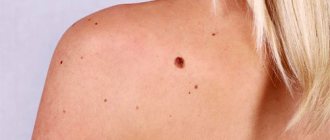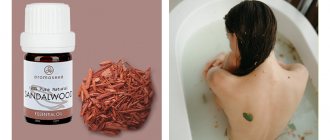Write a review
Reviews: 0
Active ingredients
- Terpinhydrate
- Terpenes
Disease class
- Not indicated. See instructions
Clinical and pharmacological group
- Not indicated. See instructions
Pharmacological action
- Calming
- Antiviral
- Antifungal
- Antiparasitic
- Immunostimulating
- Antiseptic (disinfectant)
- Bactericidal
Pharmacological group
- Homeopathic remedies
Healing properties
Tea tree oil has been valued for its high healing properties since ancient times. It was brought from distant Australia. Even before the discovery of the mainland in the 18th century, local residents used tea tree oil to treat skin diseases. The miracle remedy came to Europe and almost immediately found its connoisseurs. The oil has many advantages:
- lowers temperature during severe fever and colds;
- relieves pain from burns and promotes their healing;
- is an excellent antiseptic;
- capable of neutralizing the effects of many insect poisons;
- regenerates the skin in case of a variety of injuries;
- relieves swelling;
- defeats many viruses (especially influenza and ARVI);
- relieves fatigue and is a good analgesic and sedative;
- strengthens hair;
- Helps cure skin infections.
Tea tree oil is a universal remedy, and therefore it is often recommended as a cure for various diseases. It is especially effective in helping to get rid of warts and papillomas.
Can it be used to treat papillomas in intimate areas?
You can use tea tree medicine to treat the genitals, but you need to keep in mind that the skin in these places is very sensitive.
Therapy of neoplasms in the intimate area should be carried out with diluted oil (oil and clean water in equal parts). It is applied to a gauze bandage or tampon and the excess product is squeezed out. A bandage (tampon) is applied to the sore spot and left overnight. If a person feels itching and burning, the bandage should be removed immediately.
After a few days of therapy, a more diluted product should be used. Removal of the growth is observed within a month.
Indications for use
Treating tumors with tea tree oil is simple. It is enough to carefully handle them daily. It is recommended to carry out the procedures until the papilloma or wart “dies off” and the wound heals.
The oil itself has a very pleasant smell, and therefore its use will not cause inconvenience or disgust. The main thing is to be careful, because if the oil comes into contact with healthy skin (especially if it is very sensitive), an allergic rash, swelling and burns may appear.
This treatment is significantly safer than surgical treatment. Get rid of unpleasant tumors almost painlessly and quickly.
Description of pharmacological action
The tea tree is a low shrub or small tree belonging to the myrtle family (Myrtaceae). There are many varieties of tea tree, but only Melaleuca alternifolia has significant therapeutic properties.
Tea tree essential oil is obtained from the leaves and branches of the tea tree by distillation. Tea tree oil contains alpha-pinene, alpha-terpinene, limonene, para-cymene, cineole-1,8, gamma-terpineol, terpinolene, terpen-4-ol, alpha-terpineol, etc. Most tea tree oils related to “therapeutic grades” contains about 3% cineole, and the terpene-4-ol content is 35% or more.
Tea tree essential oil is a natural topical remedy with a wide range of effects. It has antiseptic, antifungal, antiviral, anti-inflammatory, regenerating and immunostimulating effects.
The oil effectively inhibits the growth of bacteria such as staphylococci, streptococci, pneumococci, gonococci, E. coli and a number of others, as well as fungal flora.
The disinfecting properties of the oil are used in medicine, hygiene, and cosmetology. The oil helps eliminate acne, warts, papillomas, dandruff, fungal skin infections, and is effective against insect bites, abrasions, and cuts. Strengthens hair follicles, which improves hair growth and structure.
It has a calming aromatherapy effect, helps restore the body after stress, relieves anxiety, and promotes concentration. The aroma imparts reasonable determination, preventing panic and hysteria.
Effect of tea tree oil on warts and papillomas
Papillomas and warts most often begin to appear at the moment when some kind of “failure” occurs in a person’s health, when immunity decreases after illness, pregnancy, prolonged depression or vitamin deficiency. Sometimes the appearance of papillomas and warts is a signal indicating the presence of a disease. Therefore, before starting the fight directly against papillomas and warts, it is recommended to undergo an examination and determine the cause of their appearance.
Tea tree oil has a huge amount of microelements and vitamins. These are terpineol, pinene, iodine, fluorine, iron, magnesium, calcium, vitamins B, E, D, antiviral and antiseptic substances, so the product has a general strengthening effect on the entire body. On the other hand, its rather aggressive composition contributes to the “drying out” and death of warts and papillomas.
What is papilloma and how to recognize it
A typical papilloma is a small, often barely noticeable (0.2–10 mm), growth on the skin, from flesh-pink to dark brown, sometimes attached to a thin stalk. The virus that causes the appearance of papillomas is quite tenacious, and for the time being it may not manifest itself in any way, however, as studies show, only 20% of the world's population is not infected with it.
Where does she live and what does she eat?
Most often, papilloma settles in such areas of the human body as:
- armpits,
- mammary gland,
- genitals;
- neck.
Without receiving replenishment in the form of stress, illness, weakened immunity, papilloma can remain in the same state, without causing any particular discomfort to its owner. But in the presence of these factors, as well as during pregnancy, the virus begins to actively declare itself: existing papillomas increase in size and new ones appear. In addition, it has been noted that smokers, as well as women who use oral contraception, and overweight people develop papillomas much more often than others.
Routes of infection and dangers
How did HPV become so widespread? We will try to at least partially answer this question by providing a list of the most likely routes of transmission of the papilloma virus.
So this is:
- tactile contact;
- intimate connection;
- household items;
- public swimming pools and other similar establishments;
- during childbirth (from mother to child);
- cuts and open wounds.
As we have already said, it is quite difficult to meet a person who does not have the papilloma virus in his body, and if you yourself are one of these lucky people, you can protect yourself from risk factors by leading a healthy lifestyle. In this case, even with contact with an infected person and objects that he used, the possibility of infection is greatly reduced, but not completely excluded. A complete guarantee can only be provided by minimizing contacts with the outside world, which, of course, is impossible. What to do if you still have a papilloma, and what absolutely cannot be done, we will tell you further.
In order not to cause even greater harm to your health, do not tear off or cut off the stem of the papillomas under any circumstances: thus, by getting rid of one, you will get several new papillomas at once, and this is not the worst option. It is possible that papilloma can transform into a malignant tumor, and this, as you understand, is no longer a joke.
Removing just the cutaneous part (growth) will not solve the problem. To completely get rid of the defect, it is necessary to eliminate the core of the papilloma located under the skin, and here you cannot do without the help of a dermatologist.
Usually, papillomas are removed surgically using local anesthesia, but there is a more painless method that your doctor can recommend to you if surgery is not suitable for you. Tea tree oil with its wonderful healing properties will come to the rescue.
Methods of application
Tea tree oil is a very affordable treatment for benign tumors. A concentrated drug is available in pharmacies. The very use of this remedy does not require specific skills, so you can cure the disease yourself, taking the necessary precautions (try to protect healthy areas of the skin from contact, protect your eyes, do not take it internally).
There are recipes for treating warts and papillomas on different parts of the body.
Treatment on the body
It is easiest to remove tumors from the body, since oil concentrate can be used here. To do this, take a regular adhesive plaster, cut a hole in it corresponding to the size of the papilloma or wart, and stick it to the desired location. Moisten a cotton swab with oil and apply it carefully. The procedure should be repeated 2-3 times a day (no more often). Usually within 7-10 days the papilloma or wart dries up and falls off on its own, without additional intervention. To prevent relapse, it is recommended to smear the sore spot for another day or two. The antibacterial properties of the oil will help you completely get rid of the unpleasant “decoration”.
If during the procedure you feel a strong burning sensation and observe redness, before applying it, you should dilute tea tree oil with herbal decoctions (chamomile, celandine), aloe juice, and boiled water in equal proportions.
Treatment on the legs
The skin, especially the plantar part, is quite rough, so use undiluted tea tree oil for treatment. Dampen a cotton pad and apply to the sore spot. Such compresses should be done 3 times a day. It is worth noting that it is better to bandage your foot during the procedure or wear a cotton sock. If possible, lie down during the procedure.
Treatment on the neck and face
It is not recommended to apply concentrated oil to warts and papillomas located on the face and neck. It is better to mix a little oil with a nourishing cream or replace it with lavender oil. This product should be applied pointwise 4 times a day until the tumor is completely removed.
Treatment on intimate places
Papillomas and warts that appear on intimate places cause inconvenience, and it is simply impossible to ignore them. It is worth noting that the skin in intimate areas is very sensitive, so using oil concentrate is strictly prohibited.
The oil is diluted with aloe juice, herbal decoctions or water, moistened with gauze or a cotton pad and applied for 10 minutes. After the compress, be sure to wipe the skin with a dry cloth. The procedure should be repeated twice a day. If you feel a burning sensation during application, add a little water to the compress solution, this will make it less concentrated.
Skin lesions caused by HPV
The papilloma virus manifests itself in the form of various tumors and rashes on the skin. For correct diagnosis, it is important to distinguish formations caused by a virus from acne, moles and calluses.
Warts
The most common symptom of HPV is warts. Depending on the shape and location, there are several types of warts.
Ordinary
Common warts are round and dense and may be the same color as normal skin or may be slightly pinker. They often appear in entire colonies, with the first wart usually the largest.
Plantar
These are ordinary warts, but due to their location on the soles, they cause pain and discomfort. They require special attention because they are easily injured.
Butcher
Butcher's warts most often appear on the hands. They can be recognized by the thin stalk on which they grow. Such warts are easy to rip off, so it is recommended to remove them immediately.
Flat
Flat, or juvenile, warts protrude 1–2 mm above the surface of the skin. Outwardly, they may resemble a callus, do not hurt, and rarely cause discomfort.
Periungual
This type of wart differs from ordinary warts only in location. Due to their proximity to the nail, they are very painful and difficult to remove.
Verruciform epidermodysplasia
This is an extremely rare disease in which the skin becomes covered with dense growths of warts. There are so many of them that the patient cannot move normally.
Bowen's disease
Another rare disease, the main symptom of which is the appearance of red plaques on the skin, sometimes covered with dry scales. Bowen's disease is considered either cancer or a precancerous condition.
Squamous cell carcinoma
To distinguish this disease from benign formations, it is necessary to conduct a medical examination. Squamous cell carcinoma caused by HPV occurs due to infection with specific strains of the virus.
Keratoacanthoma
Keratoacanthoma is a rapidly growing benign tumor. In itself it is safe, but it can develop into squamous cell carcinoma. Sometimes such tumors disappear on their own, leaving a scar on the skin.
Melanoma
Melanoma is skin cancer, one of the most dangerous types of cancer. The connection between melanoma and HPV has not been proven, but some studies suggest that the virus may play a role in its occurrence. Externally, melanoma is disguised as moles, warts, and age spots.
Side effects
Treating benign growths with tea tree oil usually does not produce side effects.
If, during the procedures, a burning sensation is felt, redness and rash are observed, swelling is noticeable and painful sensations appear, be sure to stop self-treatment and consult a dermatologist. It is possible that this reaction is caused by oil intolerance. But only a doctor can determine the extent of the problem and offer alternative treatment options.
HPV treatment
Despite the many treatment methods, it is believed that HPV cannot be completely eliminated, so all treatment comes down to eliminating clinical and subclinical manifestations. The treatment approach must be strictly individual. For successful treatment, several principles must be observed:
- Periodic examination for timely detection and treatment of anogenital warts, since the main route of transmission of infection is sexual (but can also be domestic - it is extremely rare).
- When HPV foci are detected, they must be constantly monitored to prevent malignancy and the development of metastases.
- Patients should be advised to use condoms or avoid casual sex.
Contraindications
If you decide to get rid of papillomas and warts on your own, do not neglect consulting a dermatologist, since it is first necessary to identify the nature of any neoplasm, otherwise it may develop into a malignant one. Then the treatment will not only not have the desired result, but may also cause irreparable harm. Improper use of oil can result in suppuration and bleeding.
There are a number of contraindications that must be taken into account before self-treatment with tea tree oil.
- Do not use oil during periods of exacerbation of existing chronic diseases. Your reaction to the medications you take may be unpredictable. It is better to wait a while and treat consistently.
- It is strictly forbidden to treat warts and papillomas for children under 6 years of age. A child's skin is very sensitive - oil can cause burns and irritation.
- Pregnant women should not treat warts and papillomas with tea tree oil; Don't risk your baby's health if you are breastfeeding.
- Do not apply oil to moles and birthmarks (it is not recommended to disturb them unless absolutely necessary).
- Possible intolerance to oil. Before applying, do an allergic reaction test: apply a little oil to the delicate skin of your wrist. Reaction time – 10 minutes. If there is no burning or redness, then your body can easily tolerate this remedy.
- It is strictly forbidden to use oil internally. Even when diluted with water, it can lead to gastrointestinal upset and poisoning.
Tea tree oil is a rare remedy that can help in the treatment of papillomas and the removal of warts. Do not forget to consult your doctor and take the necessary tests before starting treatment.
Prevention of papillomas and warts
To prevent the appearance of tumors on the skin, dermatologists advise following the following rules:
- avoid unprotected sexual intercourse;
- ensure that your diet contains enough vitamins and microelements;
- carry out the necessary hygiene measures;
- do not neglect moderate physical activity (walking in the fresh air, running, cycling, swimming);
- undergo diagnostic examinations in a timely manner;
- sleep at least eight hours in a well-ventilated area;
- do not use other people’s personal hygiene items (towels, shoes, washcloths, toothbrushes);
- in swimming pools, saunas and baths, it is mandatory to wear disposable shoes or shoes brought from home;
- limit the consumption of alcoholic beverages and tobacco products, as they contribute to a decrease in immunity;
- treat wounds and cracks on the skin with antiseptic compounds.
Causes of papillomas
Papillomas are not just a cosmetic defect that appears due to skin growth. They are benign tumors that can transform into malignant ones. That is why, immediately upon detection, you need to begin to fight them.
These tumors are a consequence of the activity of HPV - the human papillomavirus. The virus itself is in the body of most people, but many of them do not even suspect it. The virus begins to appear externally only when it enters the active phase. Then it begins to actively reproduce.
Beneficial properties of oils for the treatment of condylomas
Oils have long been famous for their beneficial properties. Their use is widespread in cosmetology, medicine and psychotherapy. Due to their natural composition, the drugs can be used for all age categories. Compared to medications, oils do not have a detrimental effect on the body. According to numerous reviews, the use of oils is effective against viral formations.
Most notable qualities:
- have antiseptic properties;
- soften the skin and growth tissue;
- stimulate blood circulation;
- have an analgesic effect;
- accelerate metabolism in skin tissues;
- prevent the spread of infection;
- promote rapid tissue regeneration;
- increase local immunity.
Papillomavirus cells quickly spread throughout the body. The components of many products prevent the virus from reproducing. This stops the spread of condylomas. This is important for lesions of the intimate areas, since growths of the genitals tend to grow inside the body.
Oils are used to treat growths and restore the skin. Most products have antibacterial and anti-inflammatory effects. This is relevant in the issue of treating HPV growths. Condylomas are injured, which creates a risk of introducing dangerous pathogenic bacteria. An inflammatory process may begin, which is accompanied by swelling or suppuration. Oils act as a barrier against infections and help avoid dangerous consequences.











